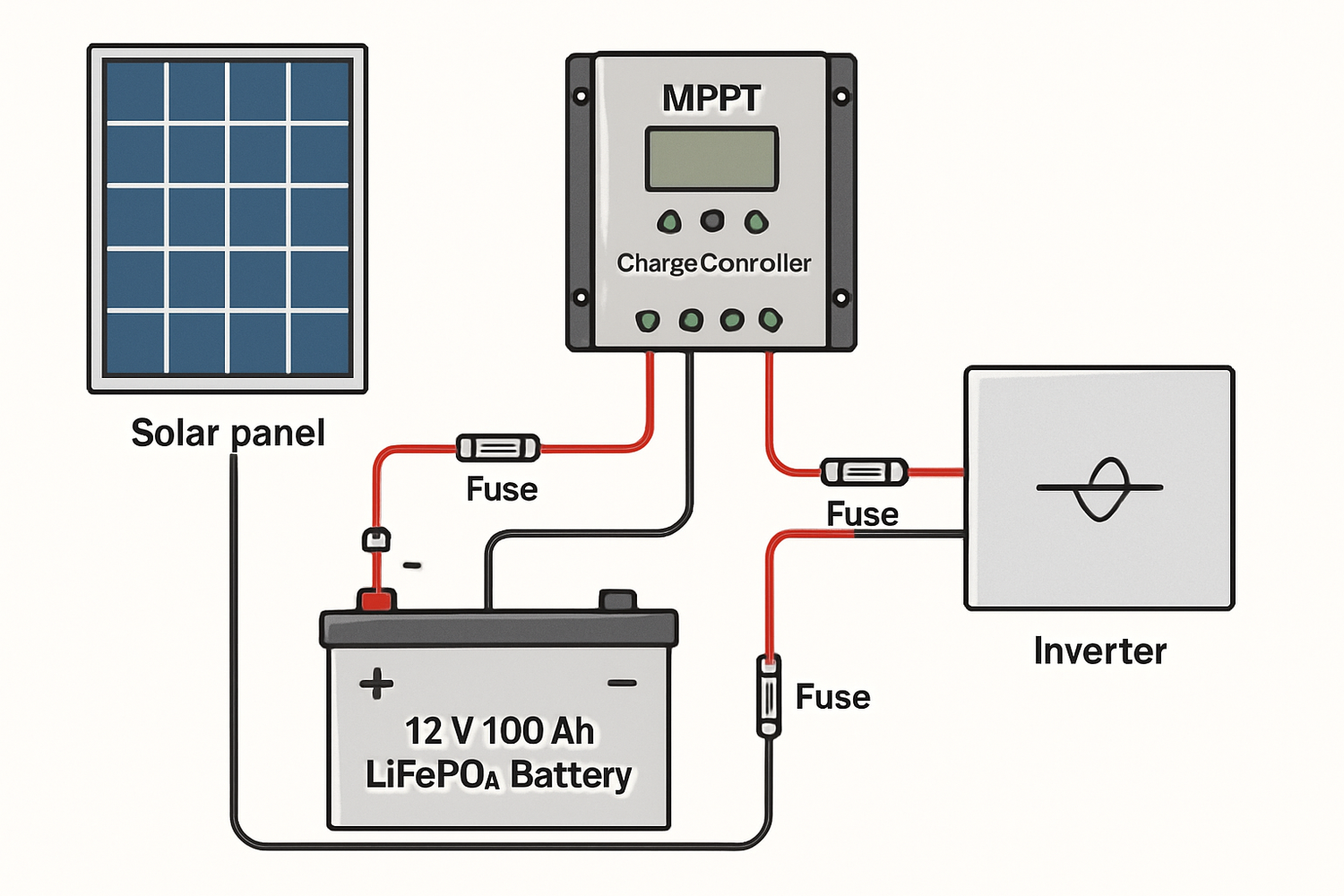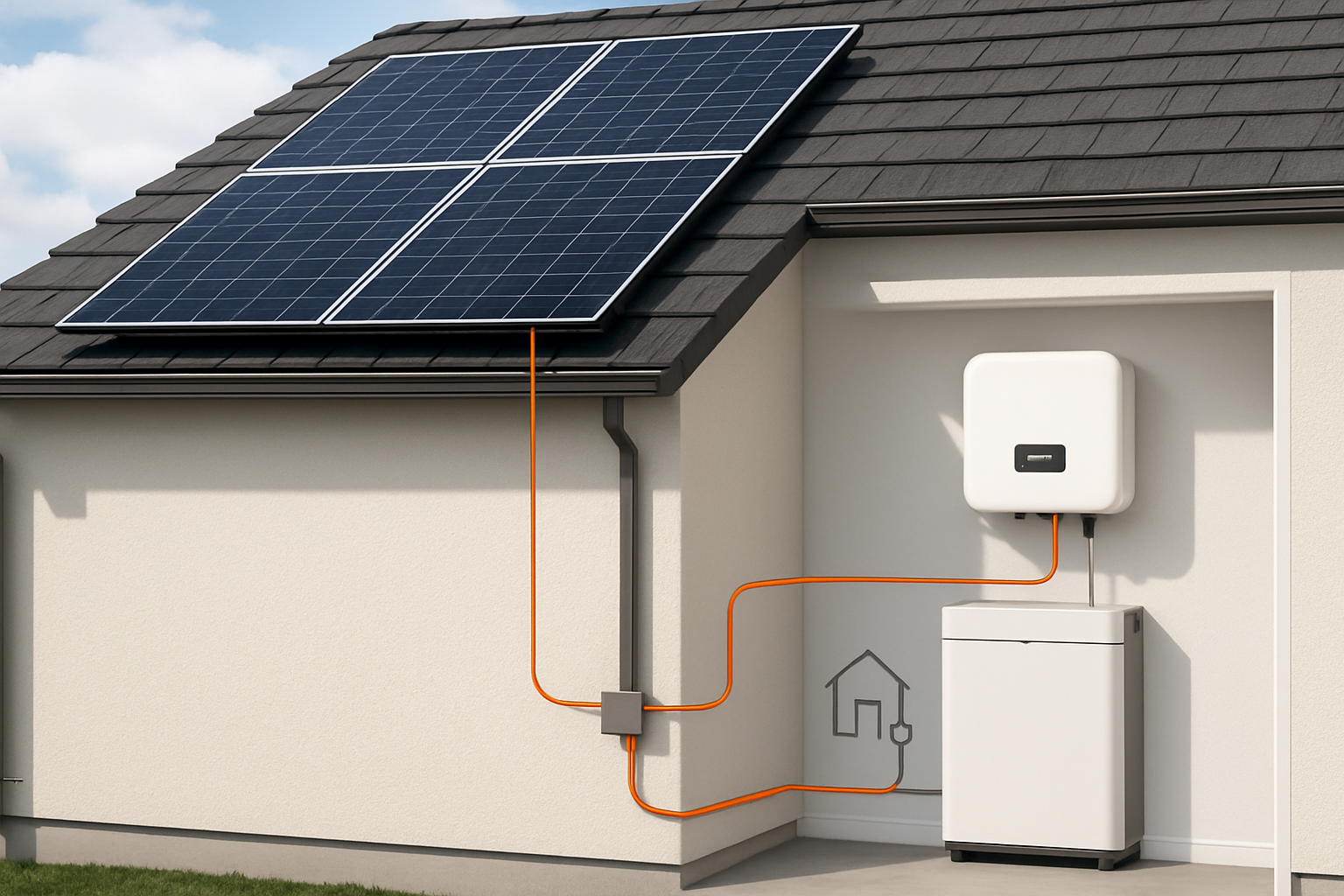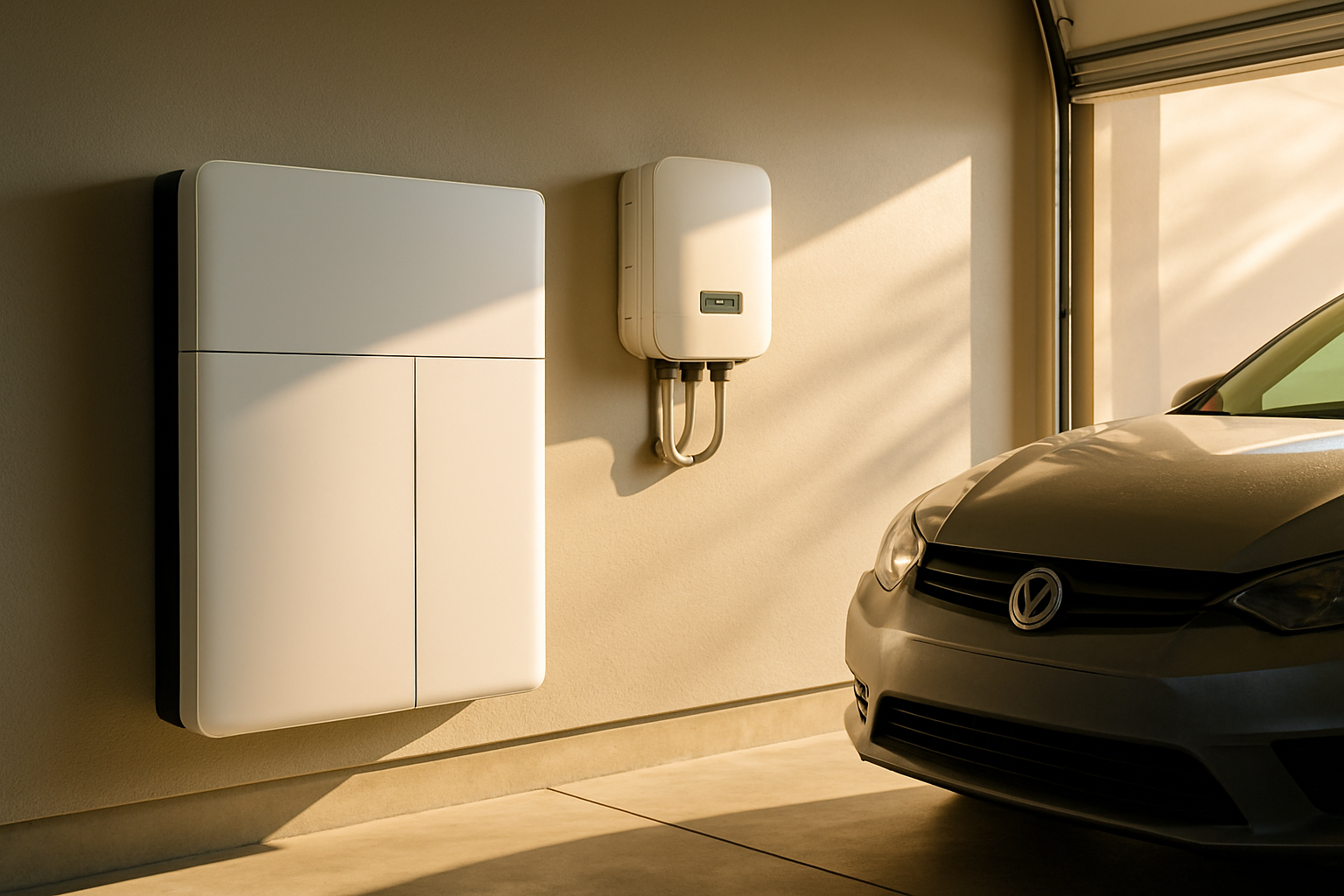Adding a battery to your solar system is a significant step toward energy independence. It allows you to store the excess power your panels generate during the day for use at night or during an outage. A 12V 100Ah LiFePO4 battery is a popular and effective choice for this solar power system upgrade. This article provides a clear path to integrating one into your existing setup, covering component compatibility, wiring, and essential configurations.
Why Choose a 12V 100Ah LiFePO4 Battery?
Before starting the integration, it's helpful to know why this specific battery type is so well-suited for solar applications. The combination of its chemistry and capacity offers a balanced solution for many energy storage needs.
The Advantages of LiFePO4 Chemistry
Lithium Iron Phosphate (LiFePO4) has become a leading technology in energy storage. According to research from the International Renewable Energy Agency (IRENA), this chemistry is noted for its durability and safety, making it a reliable choice for energy applications. Key benefits include a long cycle life, allowing for thousands of charge and discharge cycles with minimal degradation. They are also thermally stable, reducing risks associated with overheating. Their high efficiency means more of your stored solar energy is available for use.
Sizing and Suitability
A 12V 100Ah battery provides approximately 1280 Watt-hours (Wh) of energy storage. This capacity is ideal for various applications, from powering essential appliances in a home during a blackout to running electronics in an RV or an off-grid cabin. Compared to traditional lead-acid batteries, LiFePO4 offers significant advantages in performance and longevity.
| Feature | LiFePO4 Battery | Lead-Acid Battery |
|---|---|---|
| Cycle Life | 3,000 - 5,000+ cycles | 300 - 1,000 cycles |
| Depth of Discharge (DoD) | 80-100% | 50% |
| Efficiency | ~95% | ~80-85% |
| Weight | Lighter | Heavier |
| Maintenance | None | Regularly Required |
Essential Components for Integration
A successful solar setup integration requires more than just the battery. Each component must be compatible to ensure safe and efficient operation. A solar energy system typically includes panels, an inverter, and balance-of-system components, as noted by an IEA report on solar energy.
The Role of the Solar Charge Controller
The solar charge controller is a critical device that regulates the voltage and current coming from your solar panels to the battery. It prevents overcharging, which can damage the battery and shorten its life. For LiFePO4 batteries, an MPPT (Maximum Power Point Tracking) controller is recommended over a PWM (Pulse Width Modulation) controller due to its higher efficiency. Crucially, the controller must have a specific charging profile for lithium batteries.
Inverter Compatibility
The inverter converts the Direct Current (DC) power from your battery into Alternating Current (AC) power for your household appliances. Not all inverters are compatible with lithium batteries. Your existing inverter must support the voltage range of a LiFePO4 battery and have a configurable low-voltage disconnect setting to protect the battery from over-discharging. Hybrid inverters are often designed for solar-plus-storage and are an excellent choice.
Wiring, Fuses, and Safety
Proper wiring is fundamental for safety and system performance. Use the correct wire gauge to handle the current without overheating. Every connection to the positive terminal of the battery should be protected by a fuse or circuit breaker. This protects your components from overcurrent situations. Always use insulated tools and wear appropriate safety gear, like gloves and goggles, during installation.
Step-by-Step Wiring and Connection
Connecting the components in the correct order is vital for preventing damage to your system. Follow a methodical approach to ensure everything is wired safely.
A Standard Wiring Configuration
The standard connection sequence ensures the charge controller recognizes the battery before solar power is introduced. The correct order is:
- Connect the battery to the solar charge controller. This allows the controller to detect the system voltage.
- Connect the solar panels to the charge controller. Keep the panels covered or disconnected until all other wiring is complete to avoid live voltage.
- Connect the inverter directly to the battery terminals, ensuring a fuse is on the positive line.
Configuring Charge Controller Settings
Accurate charge controller settings are essential for the health of your LiFePO4 battery. While many modern controllers have a preset 'Lithium' or 'LiFePO4' mode, you may need to enter the values manually. Typical settings for a 12V LiFePO4 battery are:
- Bulk/Absorption Voltage: 14.2V - 14.6V
- Float Voltage: 13.6V - 13.8V (some recommend disabling float)
- Low Voltage Disconnect: 11.6V - 12.0V
Always consult your battery manufacturer’s datasheet for the most precise values. For a deeper analysis of how these settings affect system output, the Ultimate Reference for Solar Storage Performance offers valuable data and benchmarks on efficiency and longevity.
System Management and Best Practices
Once your LiFePO4 battery is integrated, proper management will maximize its lifespan and performance. This involves monitoring its state and operating it within recommended parameters.
Monitoring Your System
Most LiFePO4 batteries include an internal Battery Management System (BMS) that protects against overcharging, over-discharging, and extreme temperatures. For more detailed insight, an external battery monitor with a shunt can provide real-time data on state of charge (SoC), voltage, and current flow. This information helps you make informed decisions about your energy usage.
Maximizing Battery Lifespan
To get the most out of your solar power system upgrade, follow a few best practices. Operate the battery within its recommended temperature range, typically avoiding charging below freezing unless the battery has a self-heating function. While LiFePO4 batteries can handle deep discharges, you can extend their life by keeping the state of charge between 20% and 80% for daily use. Ensure the battery compartment has adequate ventilation to prevent heat buildup.
A Path to Greater Energy Resilience
Integrating a 12V 100Ah LiFePO4 battery into your solar setup is a practical way to enhance your energy resilience. By carefully selecting compatible components, following a safe wiring procedure, and configuring your system correctly, you can create a reliable and long-lasting energy storage solution. This upgrade empowers you to use your solar energy whenever you need it, moving you closer to true energy independence.
Disclaimer: This article provides general information and does not constitute professional electrical or financial advice. Electrical work can be dangerous. Please consult with a qualified professional for installation and ensure compliance with local codes and regulations.
Frequently Asked Questions
Can I mix LiFePO4 batteries with other battery types?
No. Different battery chemistries have different voltage profiles, charging requirements, and internal resistances. Mixing them can lead to charging imbalances, poor performance, and potential damage to the batteries. Always use batteries of the same chemistry, capacity, and age in a single battery bank.
How many solar panels do I need for a 100Ah LiFePO4 battery?
The number of panels depends on their wattage and your geographic location's average daily sun hours. For example, to fully charge a 12V 100Ah battery (1280Wh) in one day with 5 peak sun hours, you would need approximately 256W of solar panels (1280Wh / 5h = 256W). It is often recommended to have a larger array to account for cloudy days and system inefficiencies.
Do I need a special inverter for a LiFePO4 battery?
You need a compatible inverter, but not necessarily one labeled 'special'. The key is that the inverter's operating voltage range and its low-voltage cutoff settings must align with the LiFePO4 battery's parameters to prevent damage from over-discharge. Pure sine wave inverters are generally recommended for better performance with sensitive electronics.





Leave a comment
All comments are moderated before being published.
This site is protected by hCaptcha and the hCaptcha Privacy Policy and Terms of Service apply.